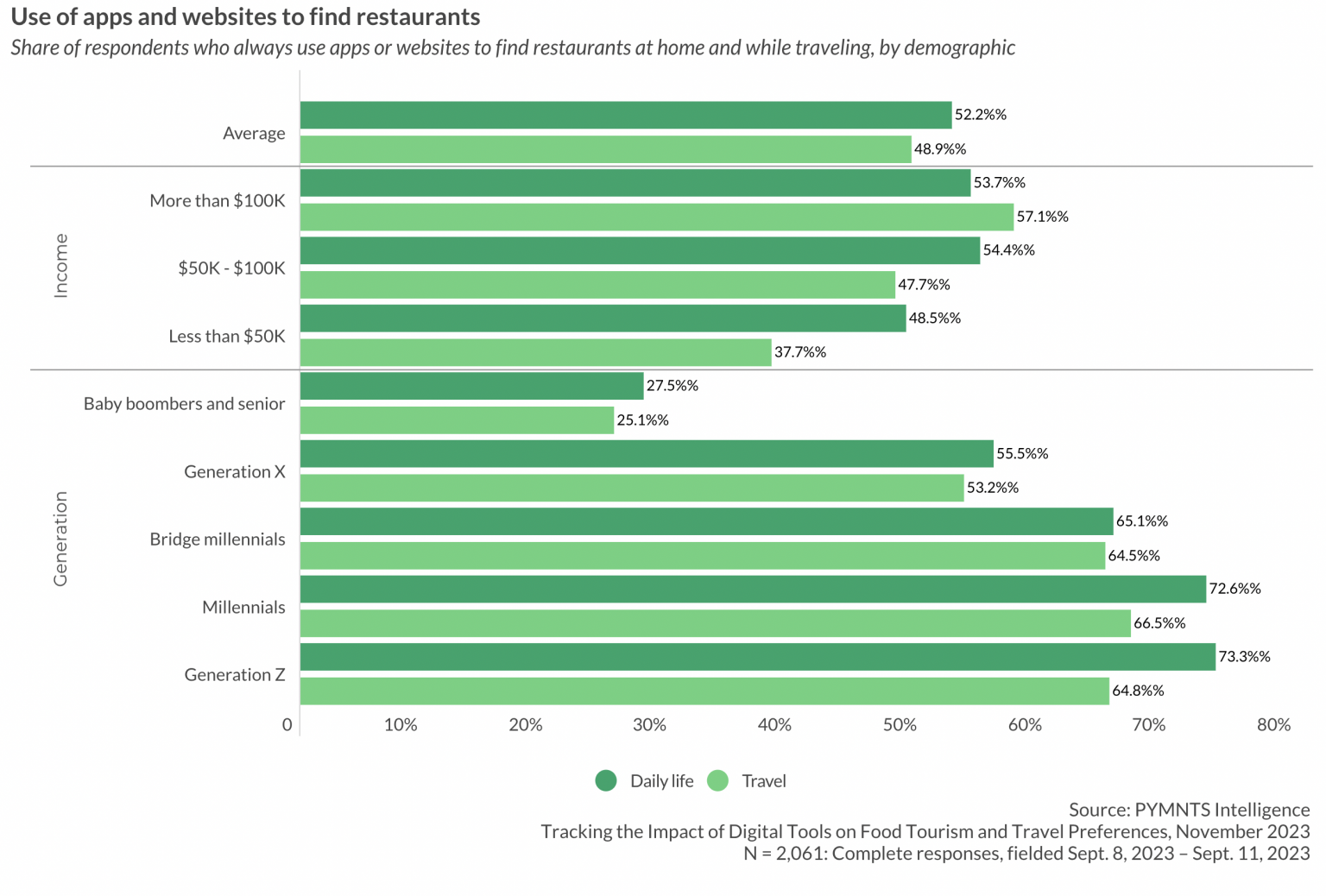
As restaurants look to boost their digital placements to draw new customers, PYMNTS Intelligence found that the most likely to be on the lookout in their day-to-day lives are middle-income consumers.
This month’s installment of the PYMNTS Intelligence Connected Dining series, “Tracking the Impact of Digital Tools on Food Tourism and Travel Preferences,” drew from a survey of more than 2,000 U.S. consumers in September to better understand how their dining habits differ while traveling compared to their restaurant habits at home.

The study found that, in their day-to-day lives at home, 52% of consumers use apps or websites to find restaurants, and middle-income consumers — those who earn between $50,000 and $100,000 per year — are more likely to do so than higher or lower earners. As such, restaurants looking to meet the needs of this middle tier would be well served to invest in their digital presence.
There remain sticking points in the digital restaurant discovery process.
“People, especially Gen Z, are doing this today on social networks, and they find themselves dealing with incredible content and amazing recommendations on the wrong platforms,” Uriel Maslansky, CEO and co-founder of social media mapping platform Atly, told PYMNTS in an interview posted in June. “It’s very, very hard to find the right restaurant around you, the right coffee shop around you, on these endless feeds.”
Additionally, many consumers are turning to Google Search and Maps as restaurant discovery platforms.
In an interview with PYMNTS posted in May, Andrew Robbins, co-founder and then-CEO (now chairman) at restaurant Software-as-a-Service (SaaS) company Paytronix, said of Google, “They are the massive content aggregator.”
A PYMNTS Intelligence survey of a census-balanced panel of more than 2,200 U.S. consumers for “Connected Dining: Word of Mouth in the Digital Age” found that 62% of restaurant customers use Google to search for eateries, a greater share than said the same of any other digital platform.